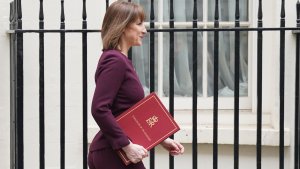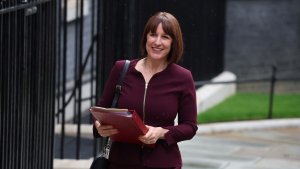The Office for National Statistics said Government borrowing stood at £22.8 billion in June, down from £28.2 billion a year earlier.
Borrowing Eases In June Amid Economic Rebound
The Office for National Statistics said Government borrowing stood at £22.8 billion in June, down from £28.2 billion a year earlier.

Government borrowing fell in June as the economic rebound continued to push up tax revenues, according to official figures.
The Office for National Statistics (ONS) said borrowing stood at £22.8 billion in June, down from £28.2 billion a year earlier.
The ONS said last month’s figure was the second highest June borrowing since records began in 1993.
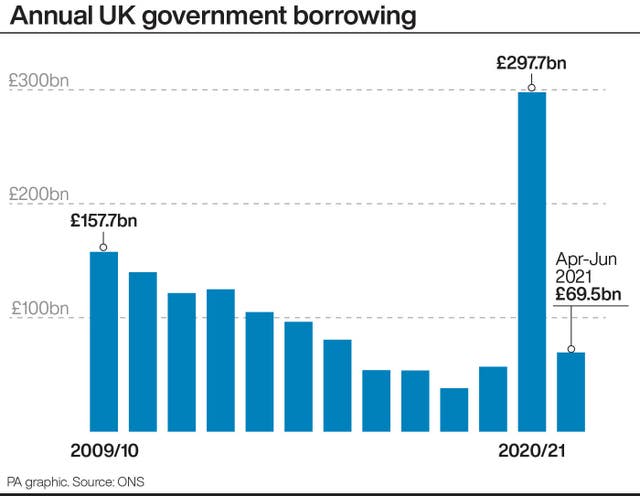
A consensus of analysts had predicted that public sector net borrowing would come in at £21.9 billion for the month.
The data shows borrowing so far this financial year has reached £69.5 billion since the end of March – £49.8 billion less than the same period a year ago.
The ONS revised down estimates for borrowing in April and May, by £2.9 billion and £3.7 billion respectively, with National Insurance tax revenues higher than previously thought as pandemic restrictions have eased.
But the figures reveal that Government spending increased by £2.5 billion year-on-year in June to £84.1 billion, with falling costs of the furlough support scheme offset by rising costs of the vaccine and Test and Trace programme, as well as higher interest payments on the debt pile.
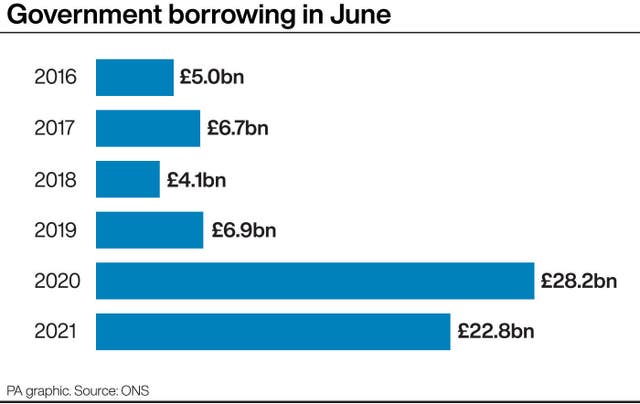
Debt interest payments rocketed to £8.7 billion last month – the highest monthly payment since records began in 1997 – on the back of steep increases in inflation.
AJ Bell financial analyst Danni Hewson said it was a “timely reminder of the impact inflation can have”.
The ONS also revised down borrowing for the financial year to the end of March again, by £1.5 billion to £297.7 billion, though this was still the highest since the end of the Second World War and equivalent to 14.2% of UK gross domestic product (GDP).
The amount of debt was at an eye-watering £2.2 trillion at the end of June, or around 99.7% of GDP, the highest ratio since the 102.5% recorded in March 1961.
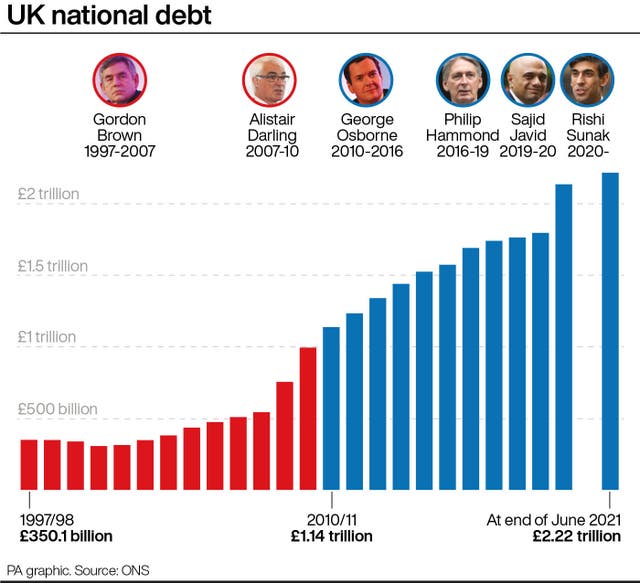
The UK’s debt levels have ballooned amid the pandemic as the Government has launched costly support measures to help households and businesses through the crisis.
Chancellor Rishi Sunak said: “I’m proud of the unprecedented package of support we put in place to protect jobs and help thousands of businesses survive the pandemic, and that we are continuing to support those who need it.
“However, it’s also right that we ensure debt remains under control in the medium term, and that’s why I made some tough choices at the last Budget to put the public finances on a sustainable path.”
The ONS said central government receipts in June hit £62.2 billion – a £9.5 billion, or 18%, increase year on year, which was driven higher by a 22% jump in tax revenues to £45.5 billion amid the wider economy rebound.
Borrowing in 2021-22 is looking likely to undershoot the £234 billion predicted by the Office for Budget Responsibility at the March Budget due to the marked recovery.
NEW: @RishiSunak faces a cacophony of calls for additional spending for the NHS, social care, and much else besides.
What do today’s borrowing numbers and the changing economic outlook mean for the Spending Review?
Thread on our new briefing note with @NuffieldFound @Citi [1/7] pic.twitter.com/vHjg0aiL13
— Institute for Fiscal Studies (@TheIFS) July 21, 2021
But while debt levels are coming down from last year’s highs, the Institute for Fiscal Studies (IFS) warned separately on Wednesday that any respite will prove short-lived for the Chancellor.
The IFS said the economy will be 3% smaller than official pre-Covid forecasts by the middle of the decade as the pandemic inflicts permanent damage, leaving Mr Sunak will little scope for long-term spending.
Samuel Tombs, at Macroeconomics, said tax hikes are likely to be on the way.
“The Government will need to hike corporation tax and to increase the effective income tax rate by freezing existing thresholds, as planned in March, if it wants to ensure that public borrowing declines to 3% of GDP in the mid-2020s,” he said.
Thanks for signing up to Minutehack alerts.
Brilliant editorials heading your way soon.
Okay, Thanks!